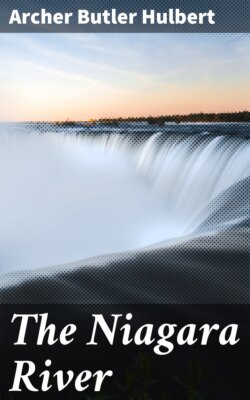Читать книгу The Niagara River - Archer Butler Hulbert - Страница 14
The View from Prospect Point.
From a photograph by Notman, Montreal.
ОглавлениеIt is important on visiting the Falls for the first time to obtain as good a view as possible, as the first view comes but once. Many are somewhat disappointed with it, since from a distance the Falls give the idea of a long low wall of water, their great height being offset by their great breadth of almost a mile. The best view is from the top of the bank on the Canadian side; but as most of the tourists reach the American side first it is from this standpoint that most visitors gain their first impression. No better vantage ground can be gained on the American side than Prospect Point. Here, placed at the northern end of the American cataract, is the best position to make a study of the geography of Niagara. Stretching from your feet along the line of sight extends the American Fall to a distance of 1060 feet. At the other side of the American Fall is the Goat Island group. This group stretches along the cliff for a distance of 1300 feet more. Beyond this extends the line of the Horseshoe Fall for a further distance of 3010 feet, making in all a total of slightly over a mile. To the right, down the river is the gorge which Niagara has been chiseling and scouring for unnumbered centuries; this chasm extends almost due north for a distance of seven miles to Lewiston. Down the gorge the gaze is uninterrupted for a distance of nearly two miles, almost to the Whirlpool where the river turns abruptly to the left on entering this whirling maelstrom, issuing again almost at right angles to continue its mad plunges. To the left, up the river lie the American Rapids, where the water rushes on in its madness to hurl its volume over the 160 feet of precipice and into the awful chasm below. Just below Prospect Point and somewhat higher in altitude than it, is what has been called Hennepin's View, so named after Father Hennepin, who gave the first written description of the Niagara. Here one sees not only the Horseshoe Fall in the foreground, as at Prospect Point, but the American Fall also, which lies several feet lower than our point of vantage.
Proceeding up the river the next point of interest reached is the steel bridge to Goat Island. The first bridge to this island was constructed by Judge Porter in 1817 about forty rods above the site of the present one. In the spring of the next year this bridge was swept away by the large cakes of ice coming down the river. It was rebuilt at its present site, its projector judging that the added descent of the rapids would so break up the ice as to eliminate any danger to the structure; and the results proved his theory true. This structure stood until 1855 when its place was taken by a steel arch bridge, which served the public until 1900. In that year the present structure authorised by the State of New York took its place.
Looking upon this structure, one wonders how the foundations could possibly have been laid in such an irresistible current of water. First, two of the largest trees to be found in the vicinity were cut down and hewn flat on two sides. A level platform was erected on the shore at the water's edge and on this the hewn logs were placed about eight feet apart, supported on rollers with their shore ends heavily weighted with stone. These logs were then run as far out over the river as possible, and a man walked out on each one armed with an iron pointed staff. On finding a crevice in the rock forming the bottom of the river, these staffs were driven firmly into the rock and then lashed to the ends of the timbers, thus forming a stay to them and furnishing the means necessary for beginning the construction of the crib. The timbers were planked, and the same process was pursued until the island was reached.
While the second bridge was under construction, the famous Indian chieftain and orator, Red Jacket, visited the Falls. The old veteran is said to have sat for a long time watching the process of bridging the angry waters, the transforming power of the white man at work, conquering a force which to him appeared more than able to baffle all the ingenuity of man. On being asked by a bystander what he thought of the work of construction he seemed mortified that the white man's hand should so desecrate these sacred waters; folding his blanket slowly about him, with his eyes fixed upon the works, he is said to have given forth the stereotyped Indian grunt, adding "D——n Yankee!"
Upon this bridge we find one of the best positions, as we have noted, from which to view the Rapids. From the point of their beginning, about a mile above the Falls to the crest of the cliff the descent is over fifty feet. Here, standing upon what seems in comparison but a frail structure, one can realise the grandeur of the Rapids. In the terrible race they seem to be trying to tear away the piers of the bridge which are fretting their current.
